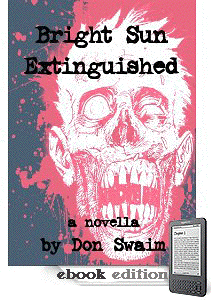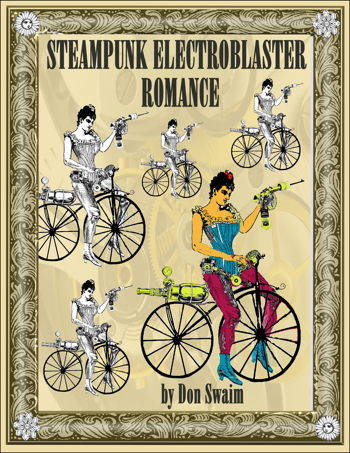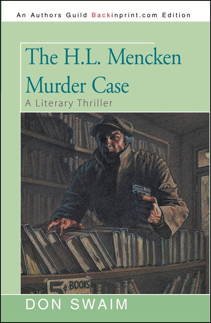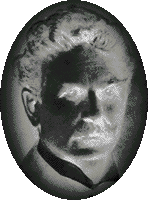 |
_______________________________________LITERARY BIERCE
_______________________________________ |
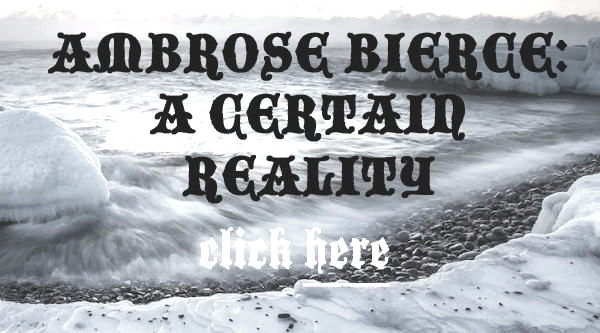 Bierce on our changing climate Bierce on our changing climate
"JOHN MORTONSON'S FUNERAL"
short story by Ambrose Bierce
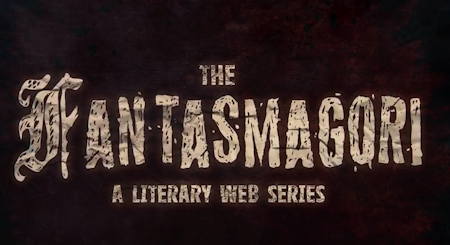
FANTASMAGORI is a collection of classic short stories performed and dramatized by actors as theatrical monologues. Ambrose Bierce's "John Mortonson's Funeral" is performed by Caroline Gautier, directed by Michael Treder, cinematography by Rafael Willitts. WATCH
|
JOHN WILSON DANENHOWER & AMBROSE BIERCE:
Danenhower (1849-1887) was a U.S. Navy officer and explorer. In 1879, as a lieutenant, he was on an Arctic expedition aboard the U.S.S. Jeanette (commanded by George Washington De Long) when the ship became caught in an ice pack near the Siberian coast. Trapped for two years, the ship was finally crushed by the ice, and the crew escaped by carting their boats over the ice flows until they found open water and somehow got to Siberia.
Danenhower, his sight nearly blinded by syphilis, had fifteen eye operations for syphilitic iritis on shipboard without anesthetics. Of the original thirty-three-member crew, only thirteen, including Danenhower, survived. De Long was among those who died. Danenhower, who did not reach home until 1882, published a book about the disastrous mission. He was a suicide in 1887.
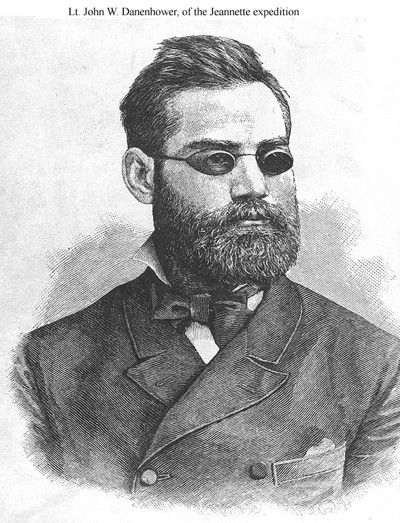 On April 7, 1882, in The Wasp, Bierce published a thirty-line poem referencing Danenhower called "Visions of Sin," which later appeared in his poetry collection Shapes of Clay (1903). With the poem Bierce is at his cynical best, as follows:
On April 7, 1882, in The Wasp, Bierce published a thirty-line poem referencing Danenhower called "Visions of Sin," which later appeared in his poetry collection Shapes of Clay (1903). With the poem Bierce is at his cynical best, as follows:
KRASLAJORSK, SIBERIA, March 29
"My eyes are better, and I shall travel slowly toward home."
DANENHOWER.
From the regions of the Night,
Coming with recovered sight
From the spell of darkness free,
What will Danenhower see?
He will see when he arrives,
Doctors taking human lives.
He will see a learned judge
Whose decision will not budge
Till both litigants are fleeced
And his palm is duly greased.
Lawyers he will see who fight
Day by day and night by night;
Never both upon a side,
Though their fees they still divide.
Preachers he will see who teach
That it is divine to preach
That they fan a sacred fire
And are worthy of their hire.
He will see a trusted wife
(Pride of some good husband's life)
Enter at a certain door
And-but he will see no more.
He will see Good Templars reel
See a prosecutor steal,
And a father beat his child.
He'll perhaps see Oscar Wilde.
From the regions of the Night
Coming with recovered sight
From the bliss of blindness free,
That's what Danenhower'll see.
|
THE NEW ULALUME
Here's Ambrose Bierce's version of Edgar Alan Poe's "Ulalume," in which Bierce does away with all of Poe's repetitive words.
The skies they were ashen and sober,
The leaves they were crisped and sere, --
" " " " withering " "
It was night in the lonesome October
Of my most immemorial year;
It was hard by the dim lake of Auber, --
" " down " " dark tarn " "
In the misty mid region of Weir, --
" " ghoul-haunted woodland " ".
|
Bierce’s First Book
The Fiend's Delight by "Dod Grile," Bierce pseudonym. Published in 1873 by John Camden Hotten, London, where Bierce was an expatriate. The American edition, a duplicate of the London edition, was published in 1873 by A. L. Luyster, New York.
_________ _________ _________
For Bierce Scholars
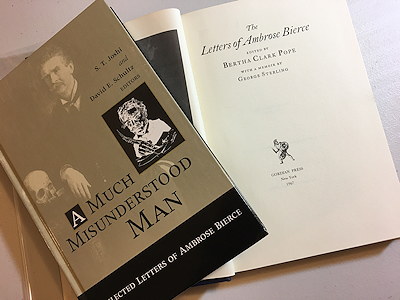
Vincent Emery, a San Francisco bibliophile, has shared with The Ambrose Bierce Site what he calls a "little tool" to better identify the correspondents in the two major collections of Bierce's letters, A Much Misunderstood Man and The Letters of Ambrose Bierce. Emery has created both a table of contents and an index. HERE |
"A Fruitless Assignment"
Horror by Ambrose Bierce
Debut episode of "The Midnight Reading," one in a series of dramatic readings
on Fireside Mystery Theater, Hosted by Ali Silva, read and performed by James Rieser. Bierce's chilling story "A Fruitless Assignment" was originally published in the San Francisco Examiner on June 24, 1888. It was republished in Volume 3 of Bierce's Collected Works under the section called "Some Haunted Houses" (1907).
HERE
|
___________________
BIERCE INFLUENCED NOVEL
The Trace by Forrest Gander
The Trace is peripherally about Ambrose Bierce, who makes a direct appearance only in a three-page epilogue. Rather, Forrest Gander's novel focuses on an academic, writing a book about Bierce, and his ceramist wife, who make a road trip following the ground Bierce may (or may not) have covered in Texas and Mexico during his ill-fated mission to join Pancho Villa in 1913.
Much of the novel deals with the effort of the couple, Dale and Hoa, to repair the damage between them following an undisclosed accident involving their son, who survives, but is now estranged.
The action picks up dramatically after the couple's car breaks down during a desert shortcut from Sierra Mojada, where one theory holds that Bierce was shot by federal troops and buried in an unmarked grave. The couple barely survives in the waterless desert's scorching heat and a near confrontation with drug runners.
Forrest Gander's descriptions of the barren landscapes of the border area between Texas and Mexico are vivid, although Dale appears willing to accept some of the unsupported theories related to Bierce's mysterious disappearance, in particular his alleged death in Sierra Mojada, a small Mexico town that is in the opposite direction to where Bierce himself said he was going, Ojinaga.
The Trace was originally published by New Directions in 2014 and republished in paperback in 2015.
HERE
Interview with Forrest Gander at: SIGNATURE
|
___________________
THE LEGENDARY BIERCE/
JACK LONDON DRINKING BOUT
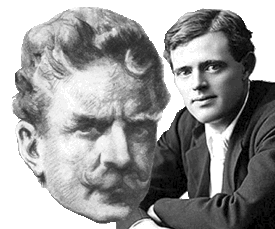
|
In the summer of 1910, Bierce engaged in a memorable confrontation with Socialist Jack London at the Bohemian Club's summer outing in Sonoma County, California. The specific details of the debate are lost to history, but Don Swaim attempts to reconstruct them using the actual words of Bierce and London. Read HERE
|
|
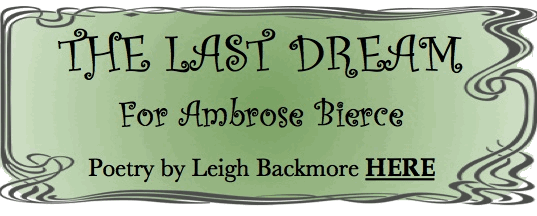
AMBROSE BIERCE AND
THE DAVID LANG HOAX
The Vanishing Farmer
Bierce aficionados know through the bibliographic work of S.T. Joshi and David Schultz that Bierce first published his short story "The Difficulty in Crossing a Field" in the San Francisco Examiner on October 14, 1888. It was later included in his collection of weird tales, Can Such Things Be, in December 1893, the story of an Alabama farmer who in 1854 vanishes in full view of his family and neighbors. [With Bierce's own disappearance, the irony is not lost to Bierce fans.]
A mystery writer named Stuart Palmer, in an article entitled "How Lost Was My Father?" in the July 1953 issue of Fate magazine, claims Bierce based his story on the disappearance of one David Lang (named Williamson in the Bierce telling), a resident of Gallatin, Tennessee, who allegedly disappeared on his farm in 1880 while in the astonished sight of family and friends. Palmer claims to have interviewed Lang's daughter in 1931, and that the daughter purportedly received a message from her father in automatic writing [in which spirits are said to control a person's handwriting directly or though a ouija board].
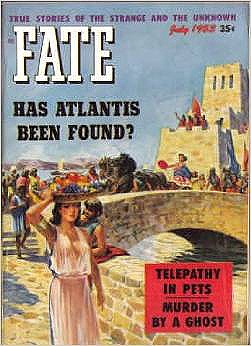
July 1953
The Lang story continued to circulate as fact. Harold Wilkins cited it in his 1958 book Strange Mysteries of Time and Space. So did Frank Edwards in his 1959 book Stranger Than Science.
It was a hoax. There was never a David Lang, at least not the one who disappeared. Stuart Palmer had reworked Bierce's fiction as fact. There is conjecture that in the 1880s a Tennessee storyteller named Joseph Mulhattan, whose pen-name was "Orange Blossom," invented the Lang tale as part of a lying contest, and that the story was picked up by The Cincinnati Inquirer. If so, Bierce adapted the account and reworked it. In turn, Palmer picked up the tale from Bierce.
In May 2014, The Tennessean newspaper reporter Danielle Eldridge, investigating the myth, tracked down the property records of the Gallatin farm allegedly owned by Lang and found several property owners over the years -- but no Lang. The farm was actually the property of one Andrew Frakes and his descendants. Read HERE
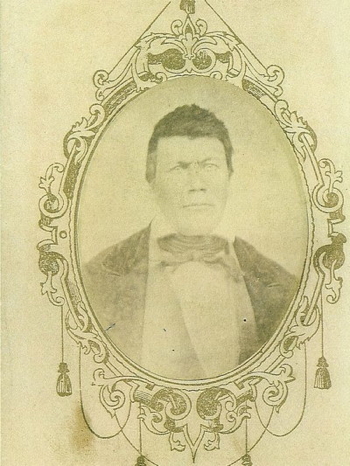
undated tintype of Andrew Frakes, owner of the "Lang" farm
But here's where it really gets weird. "The Difficulty in Crossing a Field" has been recast as an opera. The composer's name: David Lang!
Christopher Coleman, author of Dixie Spirits, Ghosts and Haunts of the Civil War, expands on the controversy:
Hoax is a bit strong. Stuart Palmer's fictional account was but one entry in a legendary tale ante-dating Bierce. A teller of tale tales, named Mulhattan, by all accounts a traveling salesman, when in his cups would write outrageous letters to newspaper editors. The David Lang story appeared first in The Cincinnati Inquirer, a paper coincidently owned by the family of General Hazen's wife. [Hazen was Bierce's superior in the Civil War.] It was in turn based on a tale that "Orange Blossom" (Mulhattan) heard in Gallatin, Tennesseee. Bierce, probably in admiration for a fellow tippler's tall tale, crafted his own version, changing the scene to Alabama before the war, instead of Gallatin after.
PS. Bierce had been in Gallatin, Tennessee, during the Civil War while with the 9th Indiana Infantry [under Hazen].
|
CHARLES FORT
Collecting Ambroses
&
COMPLIMENTS OF A FIEND
Fredric Brown and the Bierce/Fort Connection
by Robert Pohle
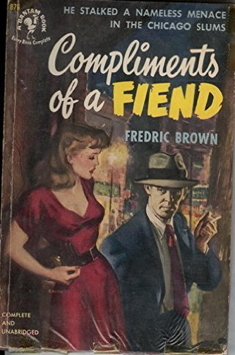 Read HERE
Read HERE
|
_________ _________ _________
HERMAN GEORGE SCHEFFAUER
One of Ambrose Bierce's many acolytes, Herman George Scheffauer, was a minor poet born in San Francisco in 1878.
Scheffauer, who published several books of verse, died a suicide after murdering his wife in Berlin in 1927.
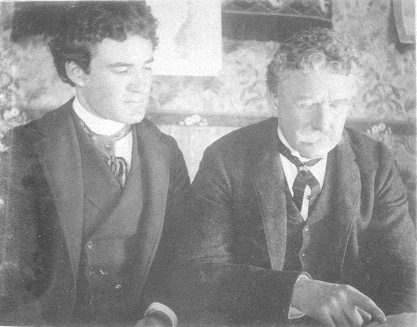
Scheffauer & BierceA large collection of photos, the Herman George Scheffauer Photograph Album, is archived at the Bancroft Library, UC Berkeley. Several photos of Scheffauer posed with Ambrose Bierce are widely available on the Internet. View the photos and more about Scheffauer HERE.
|
JOSEPHINE McCRACKIN
Josephine Clifford McCrackin (1839-1921) was part of the California literary community that included Bret Harte, Joaquin Miller, and Ambrose Bierce. During the Civil War she married an ultimately psychotic cavalry lieutenant who served at various military posts in the West. Terrorized by his insanity, McCrackin fled to California to work for Bret Harte's Overland Monthly, where Bierce published his famous short story, "The Haunted Valley." Her remarriage to Jackson McCrackin, a gold miner, appears to have been a satisfactiory one, and she published books and articles until the end of her life.
Ambrose Bierce wrote the introduction to her book about her experiences as a military wife, The Woman Who Lost Him and Tales of the Army Frontier, published in 1913 (the year Bierce disappeared). Here is the Bierce introduction only:
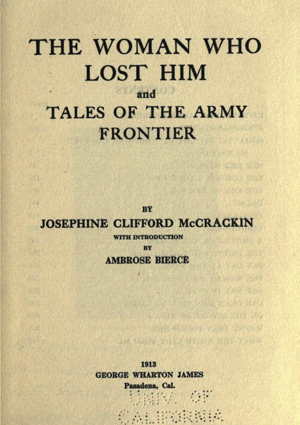
click to read
McCrackin's book is readily available to read in full on the Internet: Google Play
|
THE OXOXOCO BOTTLE
A member of the S.T. Joshi Facebook group steered me to a short story about Ambrose Bierce, "The Oxoxoco Bottle," which I had never read. It was written by Gerald Kersh (1911-1968), a British-born U.S. citizen best known for his novel Night and the City (1938), which was filmed twice, starring Richard Widmark (1950) and Robert De Niro (1992).
In the short story, the narrator, a man "coincidentally"named Kersh, discovers within an oddly-shaped bottle a rolled up manuscript, which turns out to be the last known written work of Ambrose Bierce. As the story proceeds, Bierce describes leaving the squalid Mexican Village of Oxoxoco on a burro and finds himself in a luxurious mountain hideaway where a strange, white-garbed host overwhelms Bierce with wine and food, leading the author to suspect he's being fattened for a cannibal feast.
"The Oxoxoco Bottle" was originally published on page 19 in a hardcover story collection, Men Without Bones, published by Heinemann in London, 1955. The story was republished under the title "The Secret of the Bottle" in the Dec. 7, 1957, issue of The Saturday Evening Post. The following year it won an Edgar Award from the Mystery Writers of America. The entire collection of Gerald Kersh's Men Without Bones can be downloaded here:
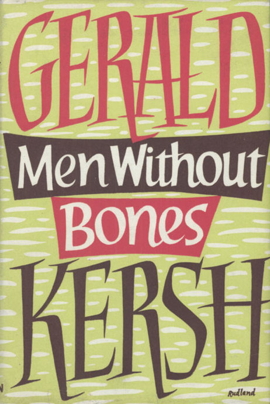 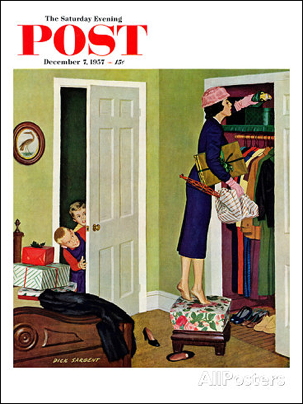
|
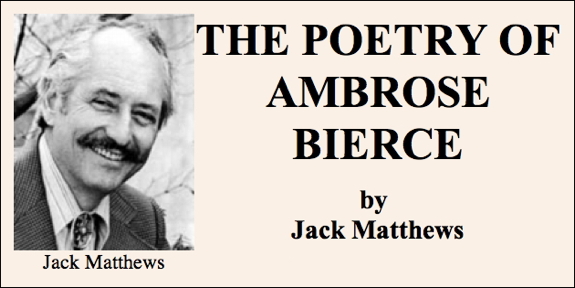
READ
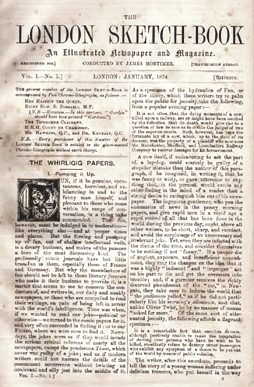
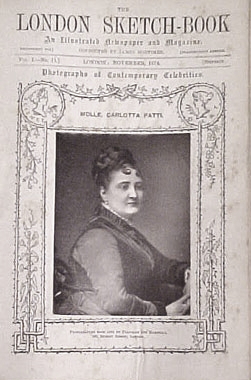
At least two of Bierce's early stories appeared in the short-lived London Sketch-Book, 1874-1875.
At the time, Bierce was living in England with his new bride.
_________ _________ _________
Don Swaim's definitive article, "Ambrose & Henry," is in the spring 2011 edition of the online scholarly publication Menckeniana, all about H.L. Mencken, published by the Enoch Pratt Free Library, Baltimore. To read the actual issue go to: Menckeniana. Courtesy Enoch Pratt Free Library, Baltimore.
|
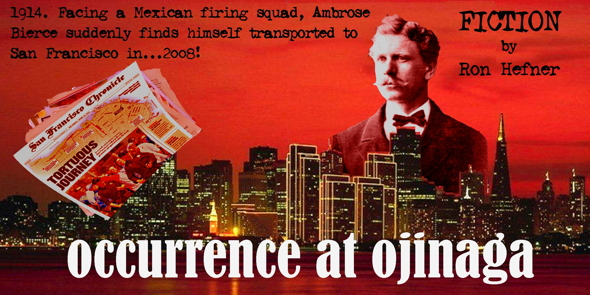
Fiction by Ron Hefner
A Bullet, A Grave, A Memory
Fiction by Wayne MacDonald. In this story, set in 1879, Ambrose Bierce, while on a mining expedition to New Mexico, hooks up with Jesse James and Billy the Kid. In the form of a letter from Bierce to H.L. Mencken. |

Billy the Kid
|
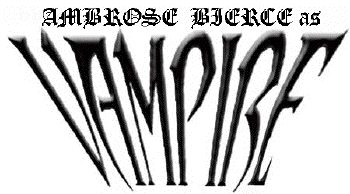 Fiction by K. A. di'Gaetano, in which Bierce returns to walk the streets of Montgomery, Alabama as...a vampire! Go to AND AS TO DRINK.
Fiction by K. A. di'Gaetano, in which Bierce returns to walk the streets of Montgomery, Alabama as...a vampire! Go to AND AS TO DRINK.
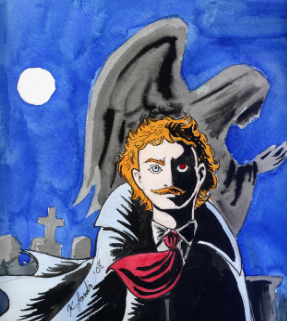 Original watercolor of the Vampire Bierce by Kathryn Landisclick to enlarge
|
_________ _________ _________
Essay by Jack Matthews
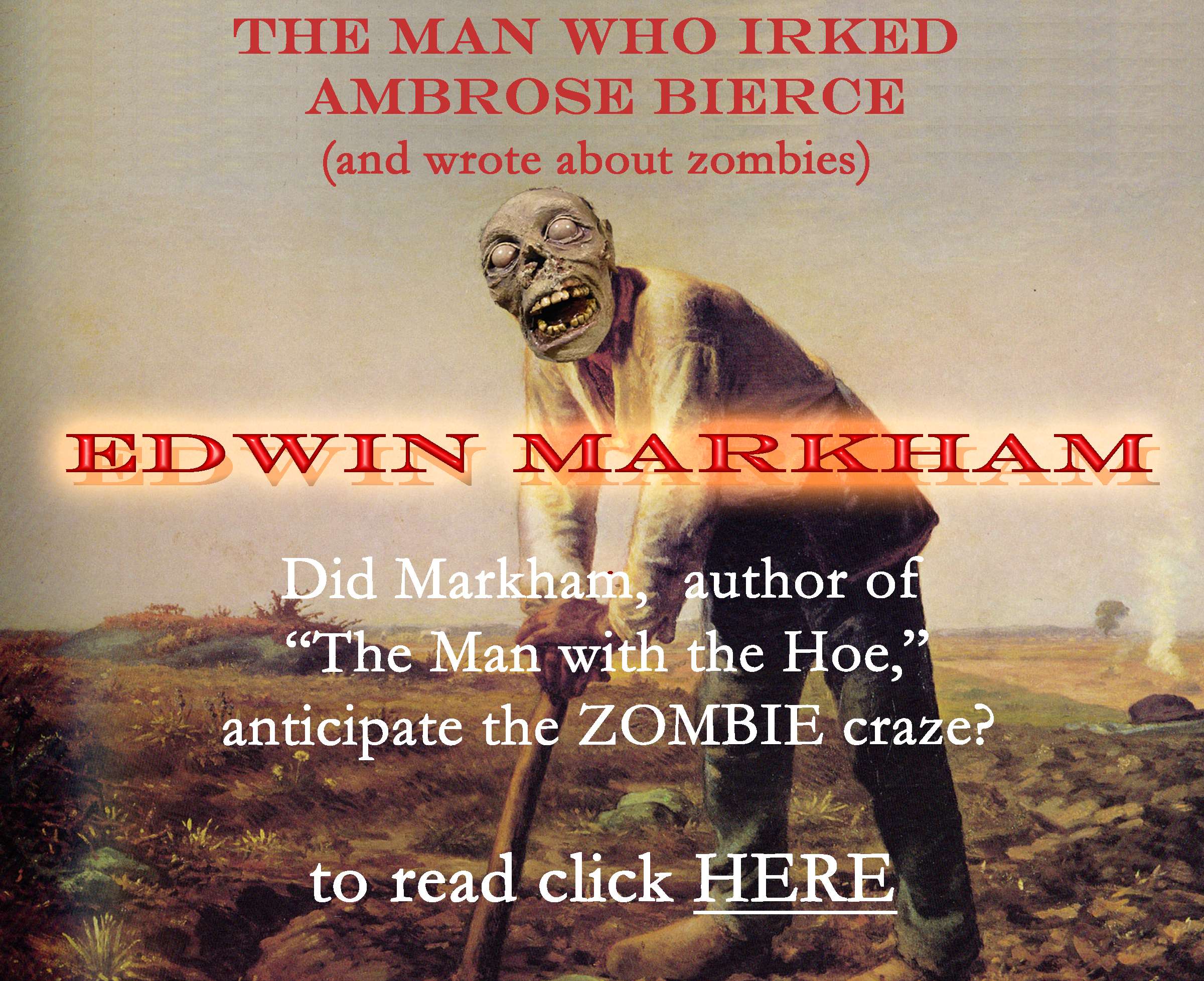
Bierce vs. Edwin Markham
The great Mexican author -- and diplomat -- Carlos Fuentes (right), who died in Mexico City on May 15, 2012, at the age of eighty-three, published some twenty books. But for Ambrose Bierce fans he'll always be known for Old Gringo, in which the fictional Bierce is caught up in a love triangle in revolutionary Mexico. In the film version, Bierce was portrayed by Gregory Peck, Jimmy Smits as one of Pancho Villa's generals, and Jane Fonda as the love interest. Ambrose Bierce Site founder Don Swaim interviewed Fuentes in 1992: LISTEN. For the unedited interview from Wired for Books listen HERE
|
|
Boston Globe columnist Jan Freeman is the author of Ambrose Bierce's "Write It Right": The Celebrated Cynic's Language Peeves Deciphered, Appraised and Annotated for 21st-Century Readers. [Walker, 2009] In a column in The New York Times Magazine, Freeman examines Bierce's strict and sometimes arbitrary rules of language. Go to Bierce's Bugbears.
|
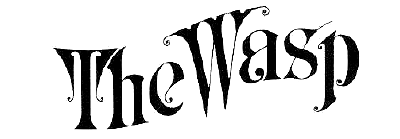 The persona of Ambrose Bierce predominates in Richard Samuel West's illustrated history of The San Francisco Wasp. Bierce served on the satirical weekly from 1881 to 1886, making pungent observations in his "Prattle" column and at one point becoming managing editor.
The persona of Ambrose Bierce predominates in Richard Samuel West's illustrated history of The San Francisco Wasp. Bierce served on the satirical weekly from 1881 to 1886, making pungent observations in his "Prattle" column and at one point becoming managing editor.
Bierce's editorials in The Wasp were required reading for San Franciscans. An opponent of oppression, a champion of civil liberties, religious freedom, and intellectual honesty, Bierce attacked talentless journalists, unscrupulous businessmen, crooked politicians, and sanctimonious religious leaders. An illustrated history of The Wasp is available at Periodyssey Press.
|
AMBROSE BIERCE 'COMPLETE' WORKS
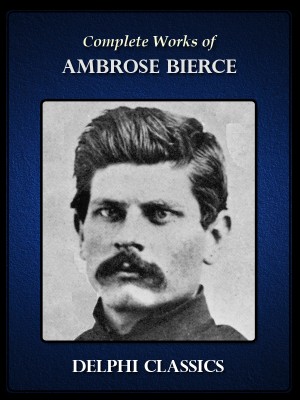
Delphi Classics, which produces digital versions of books in the public domain, has released an illustrated compendium of both major and obscure work by Ambrose Bierce, along with letters, criticism, and Carey McWilliams' classic 1929 biography, which has never been improved upon. This massive digital book, at 4,228 pages, is available in Kindle and ePub formats directly from the Delphi Store or from Amazon.com. Delphi is offering it at $1.49, Amazon at $1.99. The Delphi site is HERE
From DON SWAIM: Sorry, but this is not The Complete Works of Ambrose Bierce. It's a scan of what's commonly available on the Internet, a fraction of what Bierce actually wrote. However, at less than two bucks, who can complain? Go for it. Bierce's work is so monumental that, according to historian S.T. Joshi, it would amount to 72 volumes of published material, not yet online. While the Delphi book is searchable, one won't find references to epigrams erroneously attributed to Bierce such as, "The covers of this book are too far apart." or "War is God's way of teaching Americans geography."
|
Library of America Publishes Anniversary Bierce Title
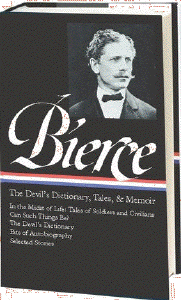
Kelly's Cove Press Issues Two Bierce Titles

Click HERE for details
|
|

 _________
_________


 _________
_________
 _________
_________
